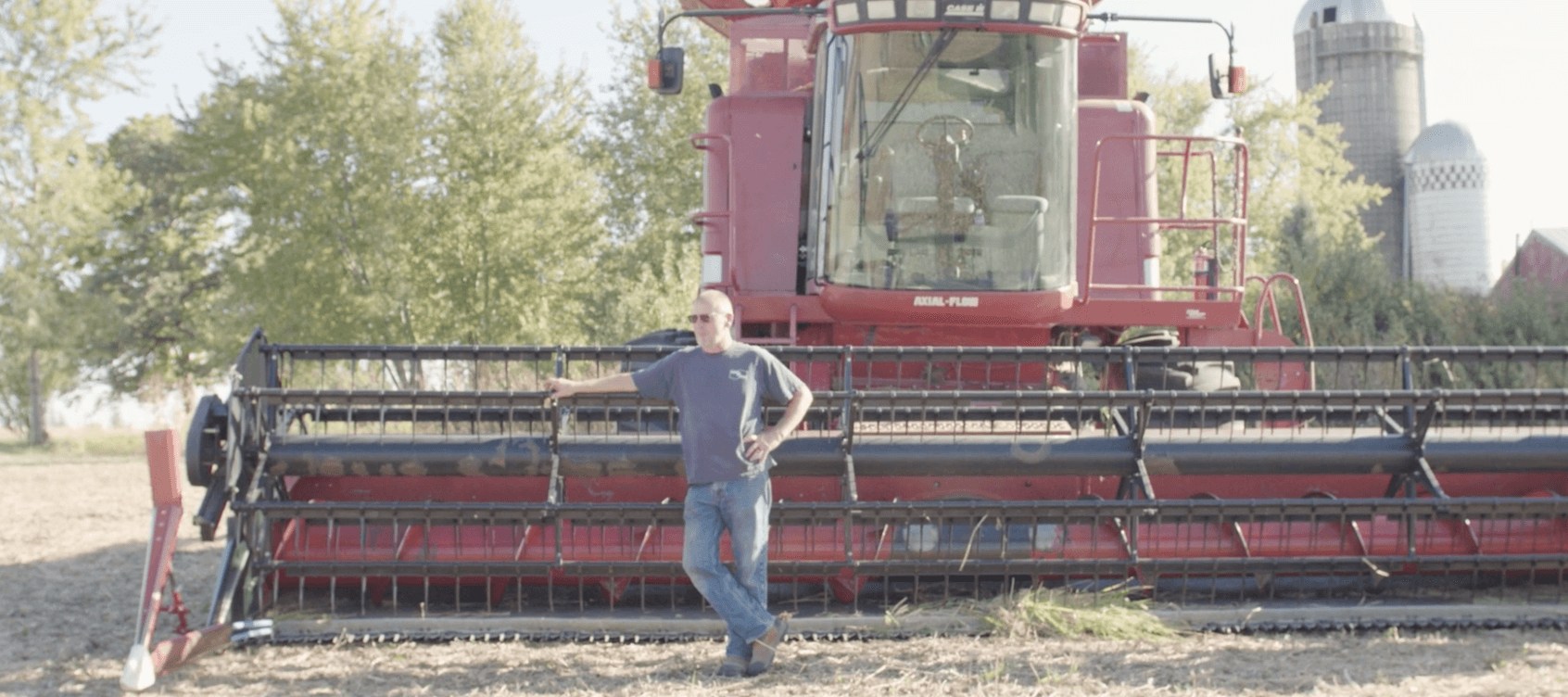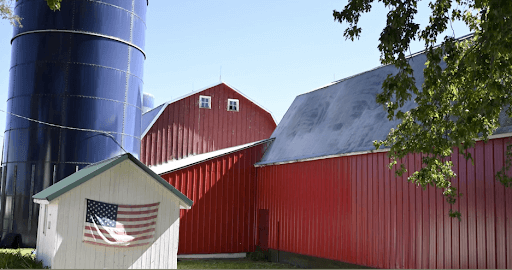Grower Spotlight: How carbon farming practices reduced this Iowa farmer’s costs by 50%
by Indigo Agriculture
Learn how carbon farming can help to reduce input costs and boost profitability.

About three years ago, Mike Bretz, a corn, soybean, wheat and oats grower in Iowa, said he was wondering what to do to move his operation into the future. He was stuck in a financial rut, barely breaking even, and he needed (as many farmers do) to take out some of his input costs to make a profit at the end of the year.
Every year, he explains, he gets all his farming supplies needed through a loan program: herbicide, insecticide, seed, fertilizer, fungicide. “It all goes on that one loan and you pay that one bill at the end of the year. And it's always $125,000 every year,” Bretz says.
“That's just really sad,” Bretz explains, that farmers once in every decade or so might be able to profit from their farm to pay off a loan, get ahead of their bills, update their equipment or put some money aside. “Once you’ve sold your grain it all went to paying off your bill for that farm payment and you’d see if there was anything left or not,” he said.
The main focus of companies, programs, even commercials on the radio, Bretz says, is all about yield. This pushes growers to take out larger loans and add more inputs to try and increase their annual yield. Just like Bretz’s $125,000 bill every year, many growers are stuck in a cycle of large loans to increase yield, and that yield only profits enough to pay off that loan, or break even at best.
When Mike switched to carbon farming practices on his land, his farm input expenses were cut by 50%. By adding cover crops, reducing tillage and implementing other carbon farming methods, his soil becomes healthier, reducing input costs that would normally be put against his annual operating loan.
“By reducing the synthetic inputs, most of the nutrients that we need are already in the soil, we just have to convert them to a form that the plants can use. If we do that, we can reduce input costs, and profitability would be a whole lot easier,” Mike explains. “And so as we sell our grains, I won’t have that $125,000 bill to pay. That’s really cool!” he chuckles.

With the Carbon by Indigo program, you can receive expert agronomic advice on how to reduce your inputs and increase profitability. All you need to do to get started is create a free account or sign in. If you’re looking at diving right into practices, see recommended cover crops for your location to target nitrogen and reduce input costs. Chat with a carbon farming expert using the chat button if you have any questions.
This article may include information from third-party sources or other information that Indigo may not independently verify. Carbon quantification methods, processes and understandings are in their nascency and subject to change and continuous development. The information contained herein is for general informational purposes only and may be based on generally applicable assumptions that may not be applicable to any individual operation. Actual results may differ among growers and farms based on a large number of variables. Each operation should independently consider the financial implications and all potential risks and benefits of the use of any agronomic practice. Any payments under Carbon by Indigo are subject to multi-year vesting and are contingent on continued long-term maintenance of regenerative agricultural practices and soil carbon levels. All Carbon Credits generated are subject to buffer pool holdbacks required by third-party crediting; participants will not receive payments for such holdback. Neither Indigo nor its representatives or affiliates makes any representations, warranties or guarantees as to any specific outcomes (agronomic, financial or otherwise) in connection with any recommendations, calculations or predictions. Terms, conditions, limitations and eligibility requirements apply. See program agreement for additional details regarding Carbon by Indigo.
Farmers like you are getting paid to implement practices that improve soil health. With skyrocketing input costs, see how covers help.
You might also be interested in:
Neither Indigo nor any of its affiliates makes any representations, warranties or guarantees as to any specific results or outcomes, including, without limitation, with respect to soil health outcomes or any minimum amount of greenhouse gasses sequestered or number of carbon credits generated. Participation in Carbon by Indigo is subject to the terms, conditions and limitations of the program contained in the applicable enrollment agreement. Any payments under Carbon by Indigo are subject to multi-year vesting and are contingent on continued long-term maintenance of regenerative agricultural practices and soil carbon levels. All Carbon Credits generated are subject to buffer pool holdbacks required by third-party crediting; participants will not receive payments for such holdback. Not available in all areas.
500 Rutherford Ave, Boston, MA 02129 | 844.828.0240 | info@indigoag.com